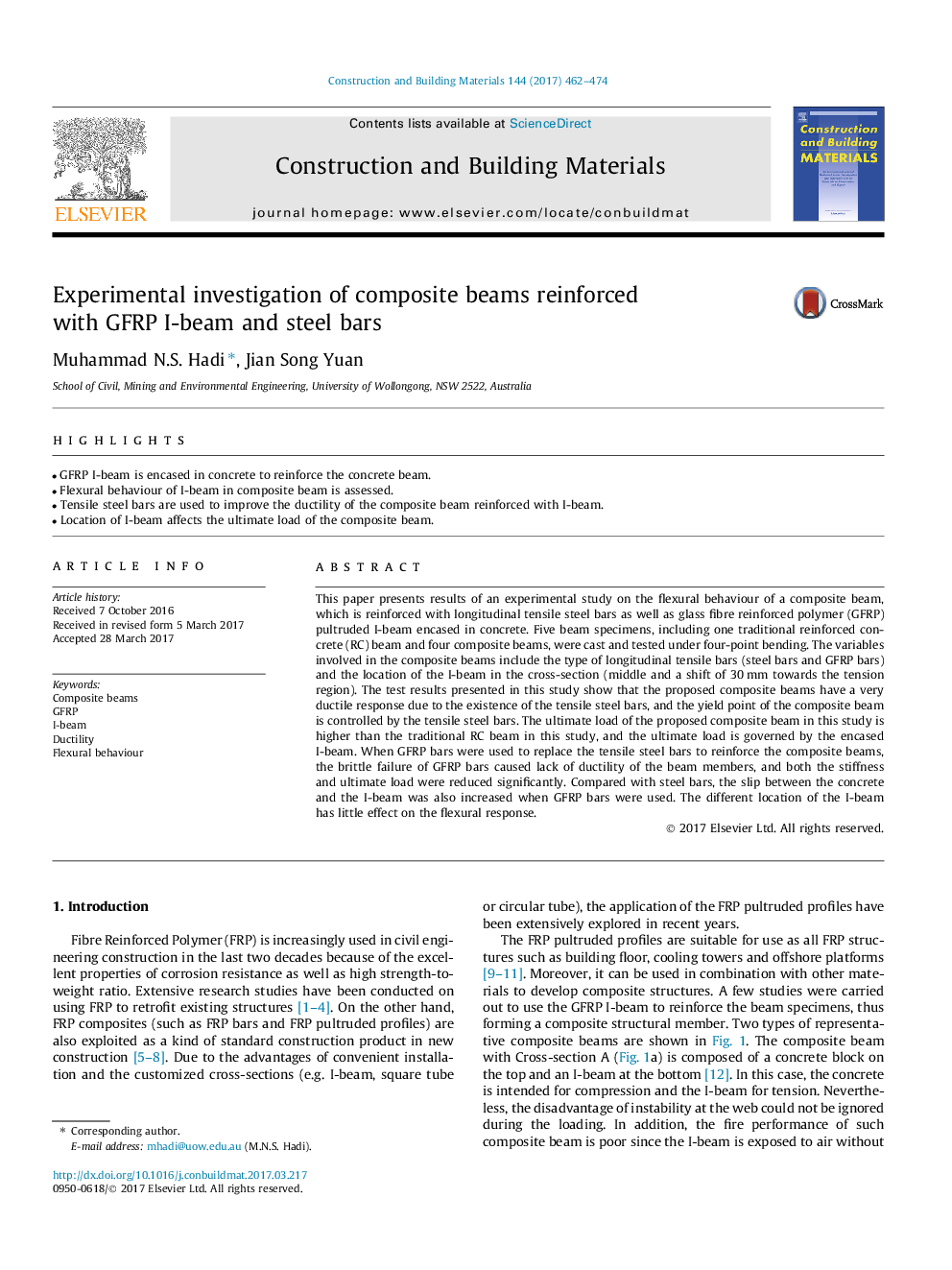| Article ID | Journal | Published Year | Pages | File Type |
|---|---|---|---|---|
| 4913183 | Construction and Building Materials | 2017 | 13 Pages |
Abstract
This paper presents results of an experimental study on the flexural behaviour of a composite beam, which is reinforced with longitudinal tensile steel bars as well as glass fibre reinforced polymer (GFRP) pultruded I-beam encased in concrete. Five beam specimens, including one traditional reinforced concrete (RC) beam and four composite beams, were cast and tested under four-point bending. The variables involved in the composite beams include the type of longitudinal tensile bars (steel bars and GFRP bars) and the location of the I-beam in the cross-section (middle and a shift of 30Â mm towards the tension region). The test results presented in this study show that the proposed composite beams have a very ductile response due to the existence of the tensile steel bars, and the yield point of the composite beam is controlled by the tensile steel bars. The ultimate load of the proposed composite beam in this study is higher than the traditional RC beam in this study, and the ultimate load is governed by the encased I-beam. When GFRP bars were used to replace the tensile steel bars to reinforce the composite beams, the brittle failure of GFRP bars caused lack of ductility of the beam members, and both the stiffness and ultimate load were reduced significantly. Compared with steel bars, the slip between the concrete and the I-beam was also increased when GFRP bars were used. The different location of the I-beam has little effect on the flexural response.
Related Topics
Physical Sciences and Engineering
Engineering
Civil and Structural Engineering
Authors
Muhammad N.S. Hadi, Jian Song Yuan,
